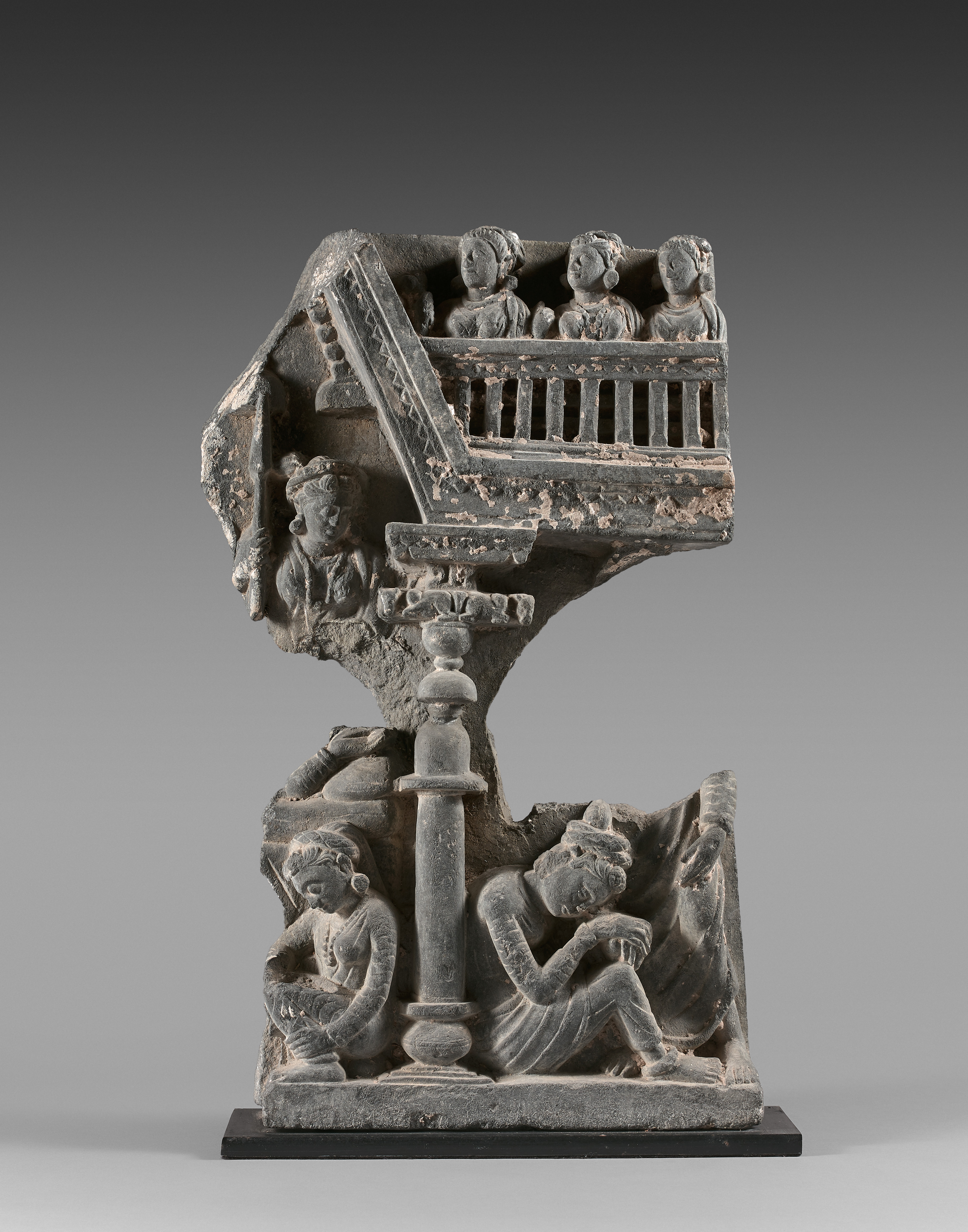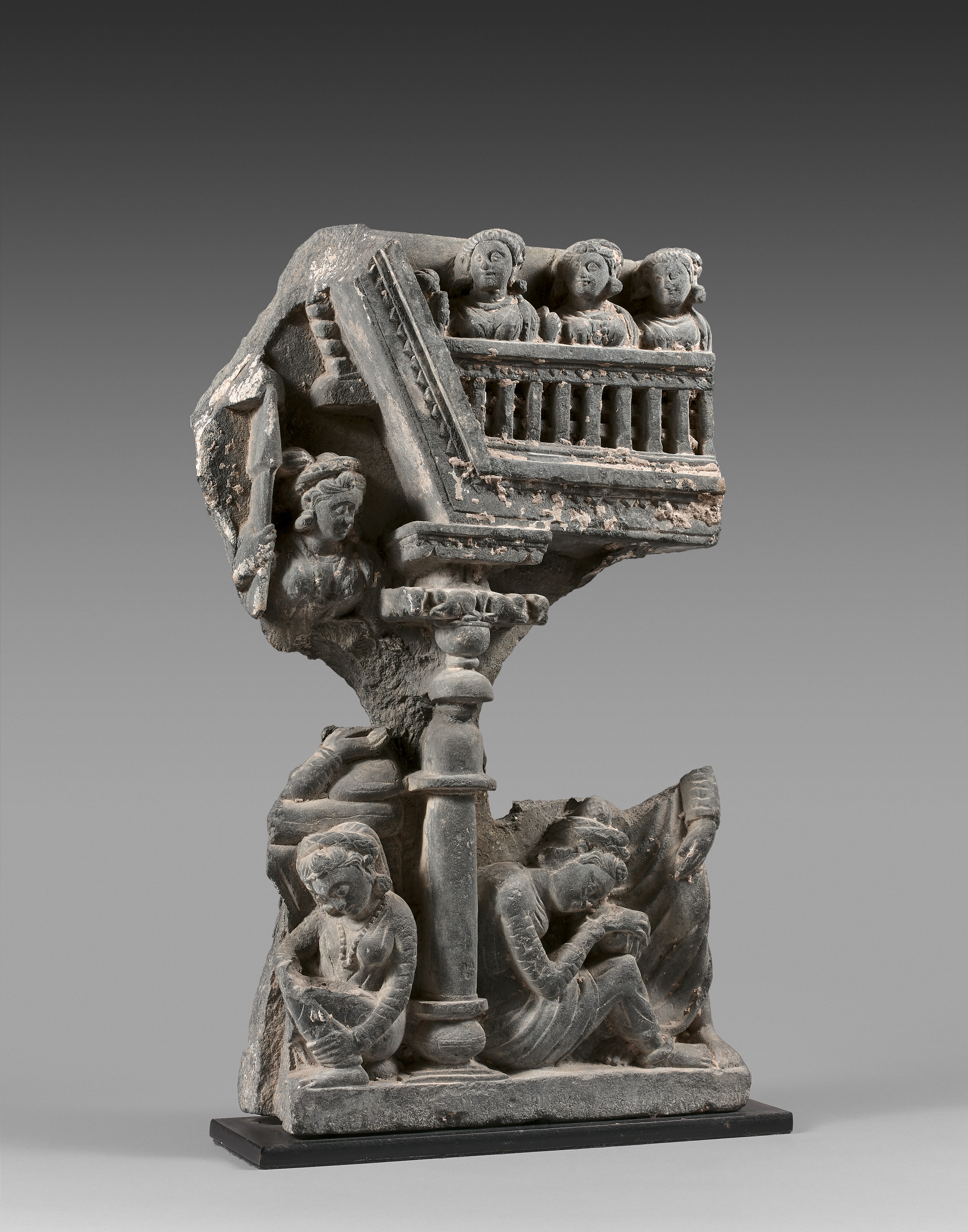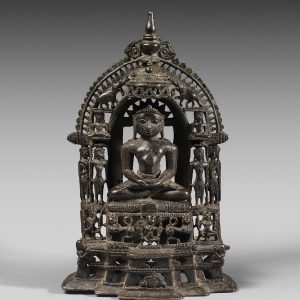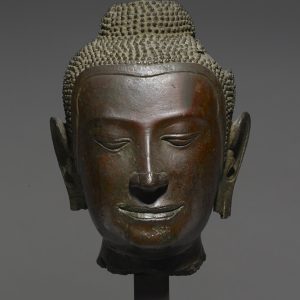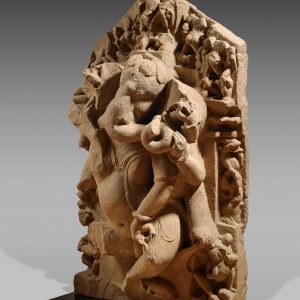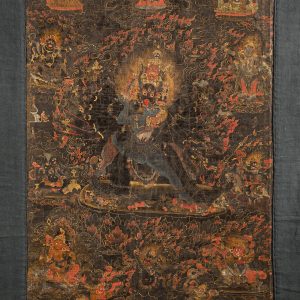Women Sleeping
Schist
Ancient region of Gandhāra
2nd – 3rd century
H. 44 cm or 17 ⅜ in
Description
Women Sleeping is the subject of this rare and beautiful Gandharan relief. Measuring 44 cm in height (or 17 ⅜ in), this work of significant size is dated to the 2nd-3rd centuries AD and is characteristic of the ancient province of Gandhāra, a region where the influences of the Greco-Roman world subtly blend with those of the Parthian and Indian cultures.
The story tells us that after having lived for many years in his father’s palace without ever seeing the outside world, Prince Siddhārtha – the future Buddha – made four decisive outings during which he met an old man, a sick person, a corpse and an ascetic. After seeing this wandering holy man and while he was in his palace surrounded by all the sleeping women, he suddenly imagined them dead, like in a mass grave. Understanding the illusory aspect of the world of pleasures and becoming aware of the transience of life, he decided to leave the palace, renounce his life of luxury, and seek enlightenment.
The scene takes place in the gynoecium, the part of the Kapilavastu palace dedicated to women’s apartments. Two of them are asleep, sitting on the ground and bending forward, their heads down and their backs leaning against a column. Another one was depicted lying on a bed, as suggested by the preserved arm and cushion on the left. Above is a female guard with a spear. Dressed in long-sleeved tunics, they are all elegantly adorned with jewelry. The sophisticated hairstyles composed with strands of hair skillfully organized in a bun and a segmented wreath headdress are characteristic of the region and particularly well carved here.
It is a very interesting work because in addition to the charming representation of these sleeping women, there is also the prominent place given to architecture. The preserved composition is unique: the column appears both as a decorative and structural element, it structures the scene giving it this rare slender shape. In accordance with a typical Indian iconography, the wooden column does not rest on the ground but in a clay pot, isolating the base from both wood-eating insects and humidity. The capital is also an architectural variation of the Achaemenid entablatures. It supports a balcony adjacent to a trapezoidal pediment and on which small characters, perhaps maidservants, look at the scene as if it were a theatrical representation.
The beauty of the piece lies in the architectural and narrative character of the scene, but also in the illustration of a decisive moment in the life of the historical Buddha.
Provenance: Private collection, UK.

